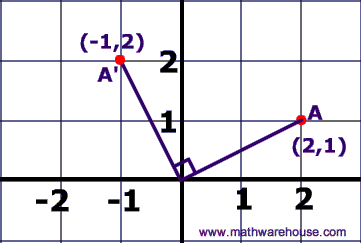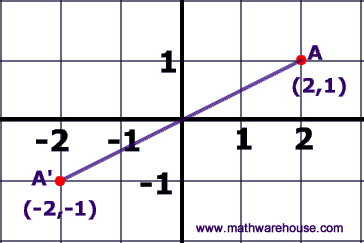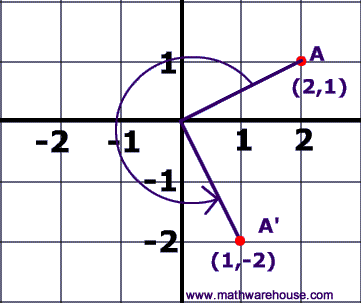The demonstration below that shows you how to easily perform the common Rotations (ie rotation by 90 , 180 , or rotation by 270) . There is a neat 'trick' to doing these kinds of transformations. The basics steps are to graph the original point (the pre-image), then physically 'rotate' your graph paper, the new location of your point represents the coordinates of the image. It's much easier to understand these steps if you watch the visual demonstration below.
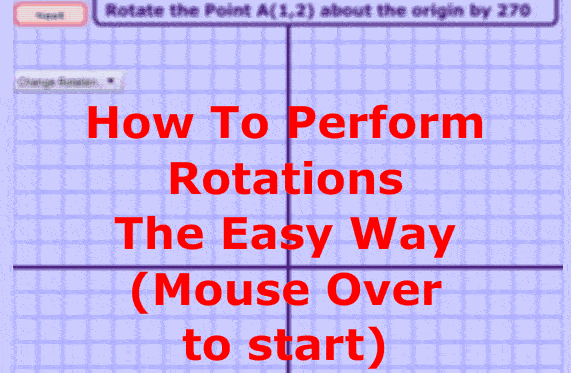

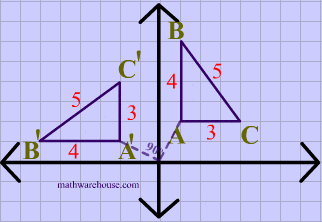
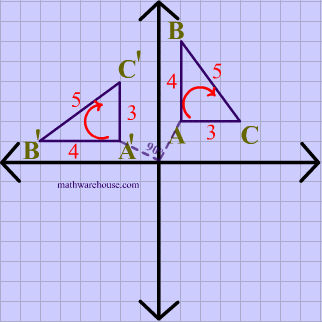
 (-B, A)
(-B, A)
